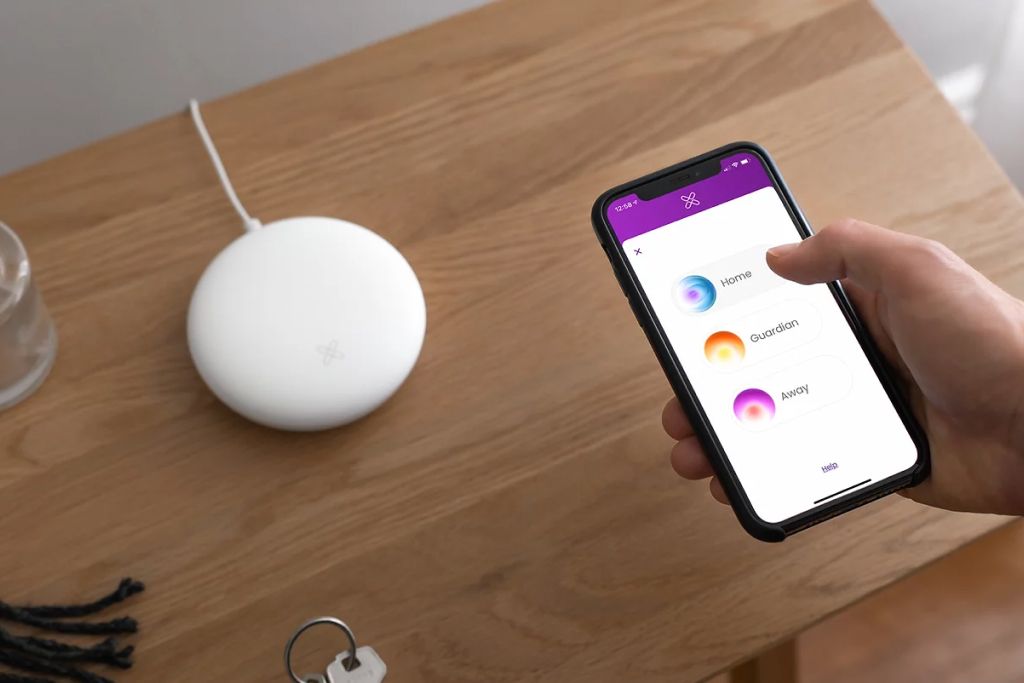Over the past two years, homeowners have spent more time at home than ever —working from home, learning online, socializing virtually and hosting small at-home gatherings. This sparked a surge in demand for home security. Families and individuals alike increasingly view home security systems as an essential investment to protect the people and things they value most.
By 2025, the home security market is expected to reach $78.9 billion. As the market grows, so does innovation within the industry. Below, we outline the top trends and technologies shaping the future of home security.
DIY Systems
DIY home security systems have been gaining steam in the market in recent years. Homeowners appreciate the convenience and ease of ordering a security system online and setting it up themselves. Plus, DIY home security systems often have the added benefit of a lower price point and don’t require bulky, difficult-to-install equipment. Largely due to pandemic restrictions, traditional security companies have begun to offer virtual alarm installation services, providing a DIY-like experience, giving homeowners a step-by-step guide through the installation process over video calls and virtual walk-throughs.
WiFi Sensing
WiFi Sensing technology is revolutionizing the home security market and stands to greatly influence how security products are made moving forward. WiFi Sensing harnesses the power of existing WiFi waves to accurately detect movement within the home, with fewer blind spots and minimal false alarms. Origin, the inventor of—and leader in—WiFi Sensing, recently announced the launch of the ‘now’ platform. In partnership with nami.ai, the platform will offer companies a turnkey, all-in-one solution, allowing brands to seamlessly deploy WiFi Sensing within software and hardware. This includes hardware that can be added to existing home security platforms, so homeowners can receive more coverage and more critical insights into their home’s activity.
Using AI for Home Security
More home security systems than ever are leveraging the power of artificial intelligence (AI) and machine learning. Not only does this make home security systems smarter, it increases the context available, increasing detection accuracy and reducing the number of false alarms. For example, security systems are using AI to analyze historical behavioral data so that the system knows if someone has left the house at a particular time (i.e., for work in the morning). When a member of the household opens the door to leave, rather than alerting homeowners to a break-in, the system will know from the prior activity context that it is not an emergency. If their security system is left unarmed, homeowners will receive a notification reminding them to arm it.
Home Automation, Interoperability
With the rise of home automation, homeowners are using security systems for more than just security. Security companies will continue to see an increased demand in devices requiring compatibility with other smart home features/systems a homeowner already has installed, offering interoperability and multi-functionality. Home security systems that can automate lights, temperature control, music, and door locks are on the horizon. At the same time, demand for voice-controlled devices is growing, paving the way for voice-activated home security systems that will trend throughout 2022.
Improved Network Security
As home security systems become more deeply connected to other smart home systems and IoT devices, homeowners are leaving a larger online footprint, making them increasingly vulnerable to cyber-attacks. Home security systems and products released today need to provide strong network security to assure homeowners that their systems are virtually “unhackable”. Safe security framework includes advanced encryption methods, randomized coding, and privacy guardrails that can lower the risk of a hack.
Home Monitoring
Security systems today have capabilities beyond just preventing break-ins. Homeowners’ needs are evolving—more people want to be able to monitor their loved ones’ activities using their home security systems. They want insights into when people are coming and going and be assured of their health and safety. Larger security companies (ADT, Alarm.com) have already branched out, using their systems for elderly monitoring. In the near future, we will see this expansion happen within the DIY home security market as well. Combined home security and monitoring services may eventually become standard across the industry.
These trends and technologies will define the home security industry in 2022, helping to usher in a new age of safety and protection.

